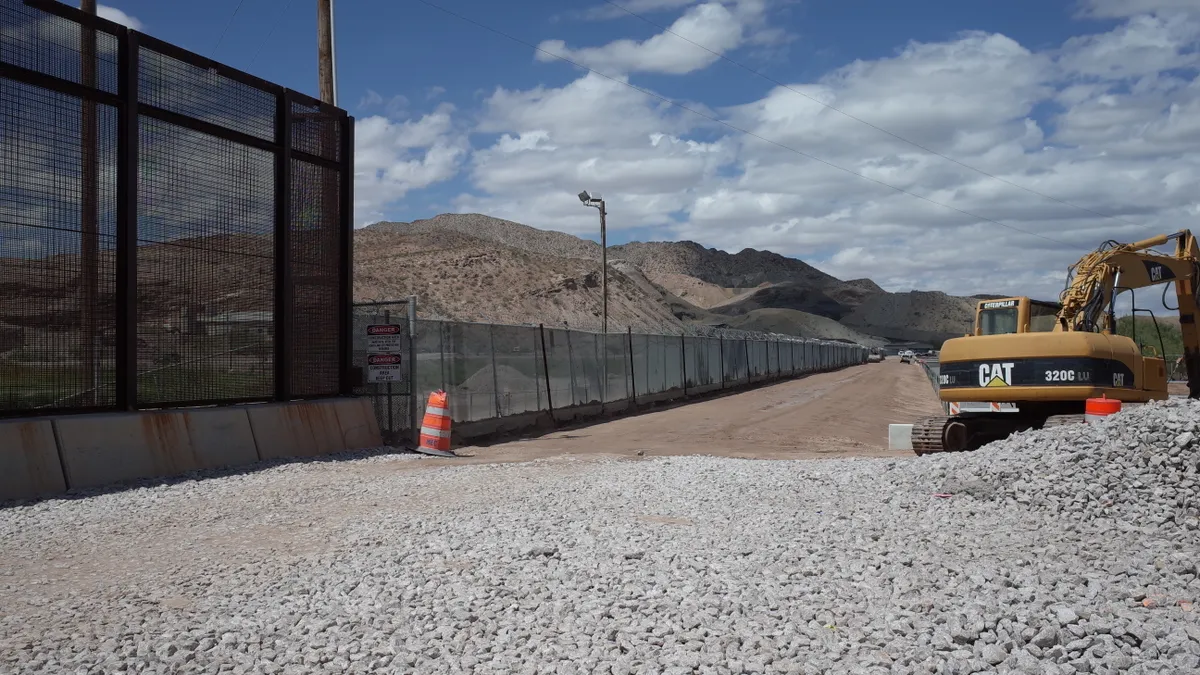Dive Brief:
- President Donald Trump, according to a report from The Washington Post, is planning to divert a second round of military funding this year, this one totaling an additional $7.2 billion of military funds to use for barrier construction on the U.S.-Mexico border.
- The administration is planning to take $3.5 billion from counternarcotics programs and $3.7 billion intended for construction projects. This is more than $1 billion above the $6.1 billion the White House earmarked for border wall construction in 2019 — $3.6 billion from the military's construction budget and $2.5 meant for counternarcotics activities. Congressional Democrats allotted only $1.4 billion for a border wall in the 2020 budget, although the Trump administration asked for $5 billion.
- Planning figures obtained by The Post indicated that the money would allow the government to build 885 miles by spring of 2022.
Dive Insight:
There has already been reported pushback from lawmakers, both Republican and Democrat, about reallocating military funds again, with some expressing disdain at the administration's attempts to divert Congressional funding after the fact. In order to make whole the Defense Department's construction budget, Congress would have to replenish it with more money, which didn't happen after the $3.6 billion was diverted last year, so the military projects that the Pentagon said were deferred are now effectively canceled.
The administration's resolve to continue with border wall construction has likely been buoyed by court victories during the last year.
In July, the U.S. Supreme Court lifted a California federal court's injunction preventing the administration from using the $2.5 billion of counternarcotics funds for wall projects in Arizona, New Mexico and California. So, while the Ninth Circuit in California reviews the Trump administration's appeal of that same court's ruling that using the money for the border wall does not rise to meet the requirements of a national emergency declaration, the government can continue with wall construction.
Then, the U.S. Court of Appeals for the Fifth Circuit in New Orleans last week lifted an injunction imposed by a federal judge in the Western District of Texas and allowed construction of the border wall to continue. The latter court in early December ruled that the Trump administration's transfer of the $3.6 billion of military funds for use on the border wall was unlawful and ordered the injunction. Like the Supreme Court's decision, the Fifth Circuit's stay will remain in effect until the lower court has ruled on the administration’s appeal.
Meanwhile, the U.S. Army Corps of Engineers is looking to spend about $300 million on border wall construction quality control. Before the Army Corps issued its presolicitation notice for interested contractors, there were reports of smugglers using off-the-shelf tools to cut through new sections of wall. Winning bidders will be party to a multiple award task order contract (MATOC), which will include onsite quality assurance (QA) inspections, preparation of QA reports, safety inspections and the identification and reporting of potential construction issues.
The Army Corps expects the MATOC work to take place primarily south of San Diego, near the Arizona cities of Tucson and Yuma near the El Paso-Southern New Mexico Corridor and in the McAllen area in South Texas.













